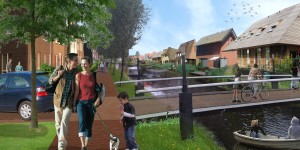Seeds sought to sow a new city
This year’s Wolfson Economics Prize is inviting entrants to consider how they could deliver a new Garden City, which is visionary, economically viable, and popular. With the number of households continuing to outstrip the supply of homes, it is clear that as a society we need to consider ways in which we can meet the housing needs of future generations.
Given the controversy that surrounded the previous Eco-Towns programme it comes as no surprise that entrants will be asked to demonstrate how local support for a new city could be secured and demonstrated. The competition is also seeking visionary ideas for improving the quality of urban life and providing the conditions for economic sustainability, but what comes as a surprise is the lack of any reference to environmental sustainability.
Surely one of the fundamental challenges to our future wealth and quality of urban life is the increasing depletion of our environmental resources and the threat of climate change as a result of our zealous use of these resources in the past. This is inexplicably linked to how we plan, design and manage our society but unfortunately it feels that the scepticism over the ecological credentials of the proposed Eco-Towns has clouded confidence in our ability to build communities that can meet these challenges.
Ebenezer Howard, who spurned the Garden City movement with his book “Garden Cities of To-morrow,” imagined new cities with “pure air and water”, “good drainage,” “fields and barns” and “beauty of nature.” Perhaps we should imagine how carbon neutral buildings, grey water recycling, sustainable urban drainage systems, allotments and green infrastructure could meet the future needs of tomorrow’s garden cities.
